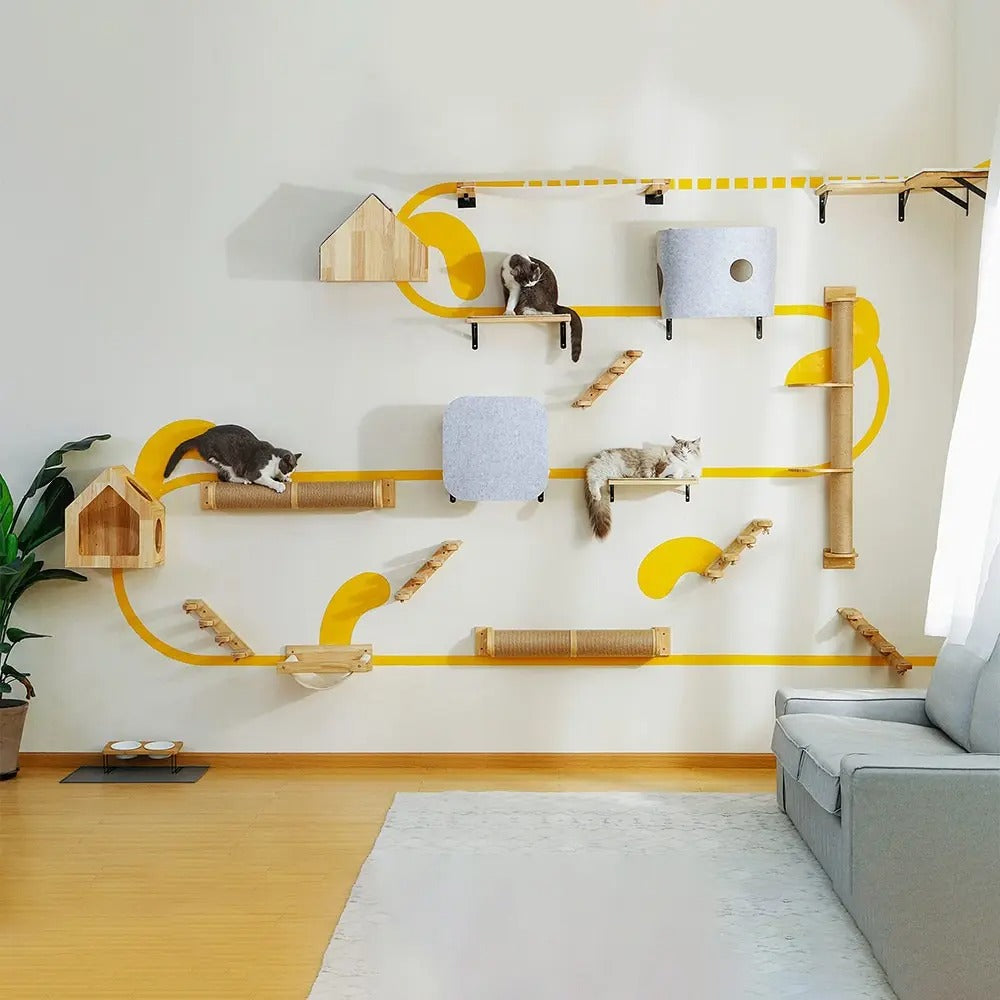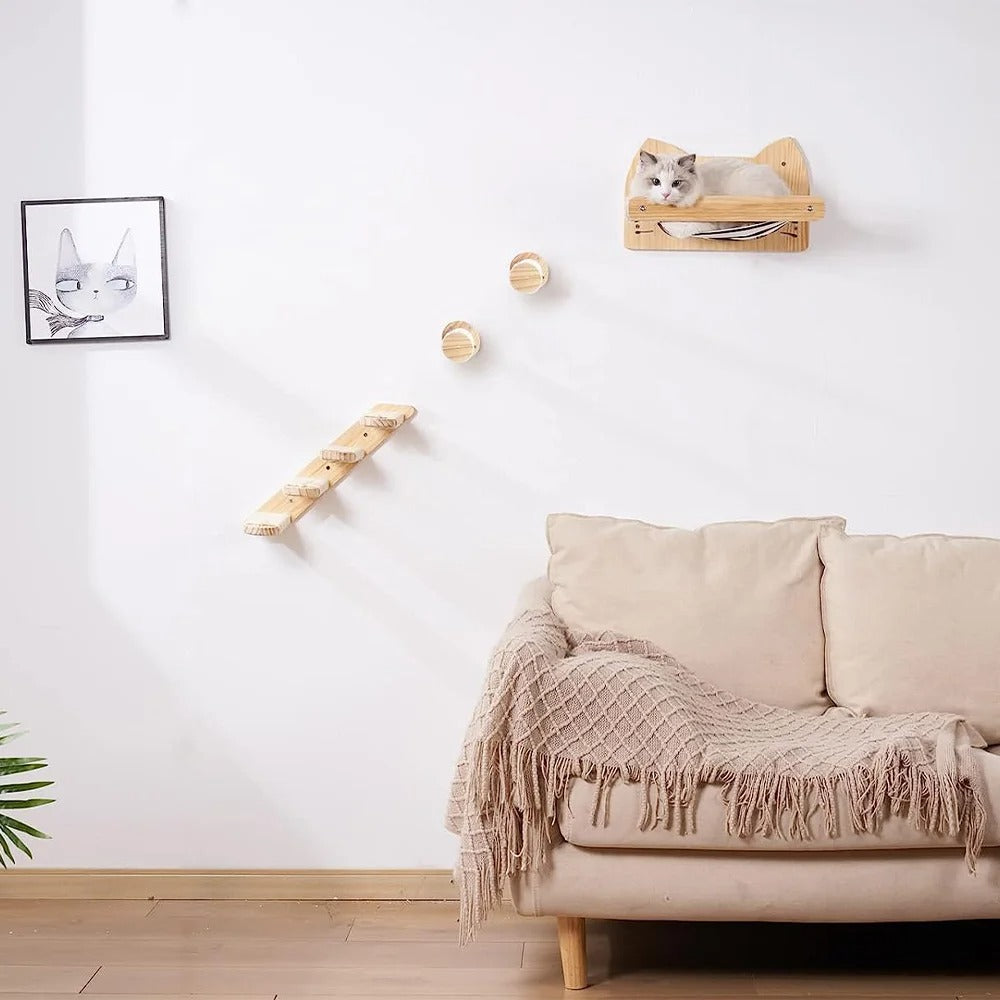Introduction
Cats are fascinating creatures with complex behaviors, especially when it comes to play. Understanding the psychology behind cat play is essential for providing an enriching environment for our feline friends. Cat trees, with their various features, cater to multiple aspects of cat psychology. This blog post delves into why cats are attracted to cat trees and how these structures fulfill their instinctual needs.
The Instinctual Basis of Cat Play
Play is not just a leisure activity for cats; it’s a manifestation of their instinctual behaviors. It involves hunting-like actions such as stalking, pouncing, and climbing. Cat trees provide an avenue for these behaviors in a domestic setting.
Key Instinctual Behaviors:
1. The Hunting Instinct
- Cats are natural hunters, and play mimics the skills needed for hunting. Cat trees with toys and dangling objects stimulate these instincts.
2. Climbing and Exploring
- Cats are adept climbers, and heights give them a sense of safety and control. Cat trees with multiple levels satisfy this urge.
3. Territoriality
- Cats are territorial animals. Cat trees become a part of their claimed space in your home.
The Role of Cat Trees in Cat Psychology
Providing a Safe Haven
- Elevated spaces in cat trees allow cats to observe their surroundings from a vantage point, offering a sense of security.
Encouraging Physical Exercise
- Climbing and jumping on a cat tree provide physical exercise, keeping cats agile and fit.
Mental Stimulation and Stress Relief
- Interacting with different elements of a cat tree keeps cats mentally stimulated and helps alleviate boredom and stress.
Features of Cat Trees That Attract Cats
1. Variety of Textures and Surfaces
- Different textures for scratching and climbing cater to a cat's sensory preferences.
2. Interactive Toys
- Toys that mimic prey, such as mice or birds, engage a cat’s hunting instincts.
3. Hiding Spots and Perches
- Cozy nooks and elevated perches provide places for rest and observation, catering to both the need for safety and the predatory instinct.
Understanding Individual Preferences
Not all cats are the same; their attraction to different features of a cat tree can vary based on age, personality, and past experiences.
Observing Your Cat’s Behavior
- Pay attention to your cat’s play habits to understand what features of a cat tree are most appealing to them.
Providing Variety
- Offer a range of options on the cat tree, including different levels, textures, and toys.
The Social Aspect of Cat Play
In multi-cat households, cat trees can facilitate social interaction and play among cats, or provide individual spaces for solitary time.
Enhancing the Cat Tree Experience
Regular Updates
- Rotate or add new toys and accessories to keep the cat tree interesting and engaging.
Placement in the Home
- Place the cat tree in an area where your cat likes to spend time, ensuring it’s a part of their daily environment.
Conclusion
Understanding the psychology of cat play is key to appreciating the role of cat trees in a cat's life. These structures are more than just play areas; they are integral to satisfying a cat’s instinctual needs for hunting, climbing, and territorial behavior. By providing a cat tree with a variety of features and observing your cat’s individual preferences, you can ensure that it becomes a valued and beneficial part of their environment. Discover Australia's most affordable range of premium cat trees and towers at cattreehaven.com.au where we bring joy to your feline friends with Australia's best cat trees and towers!
FAQs
Q: How can I encourage my cat to use a new cat tree?
A: Introduce the cat tree slowly, use treats or catnip to attract your cat, and place it in a favorite area of your home.
Q: Why does my cat sleep so much on the cat tree?
A: Elevated and secluded spots in cat trees provide a sense of security, making them ideal sleeping spots for cats.
Q: Can older cats benefit from cat trees?
A: Yes, but ensure the tree has easily accessible platforms and comfortable resting areas.
In summary, cat trees play a vital role in fulfilling a cat's instinctual needs and enhancing their overall well-being. They provide a safe haven for observation, a playground for physical exercise, and a territory for exploration. Understanding this can help cat owners choose and maintain a cat tree that will be cherished and frequently used by their feline companions.



